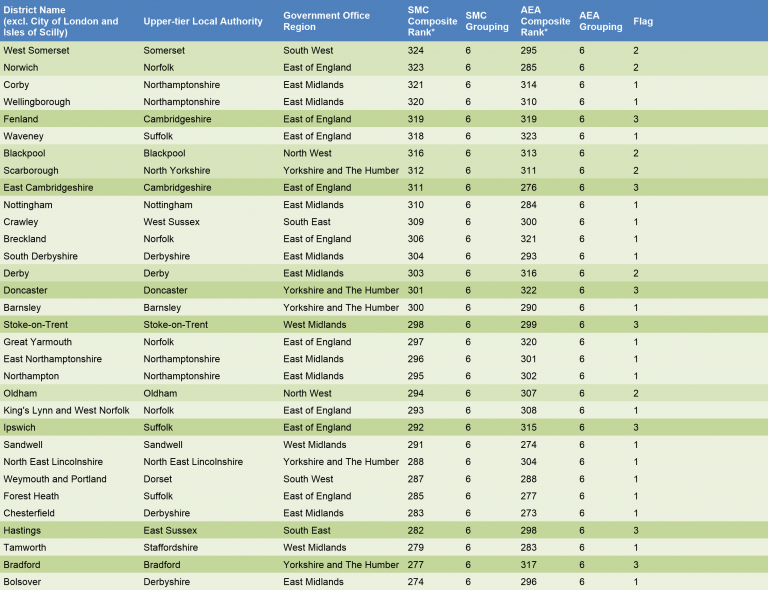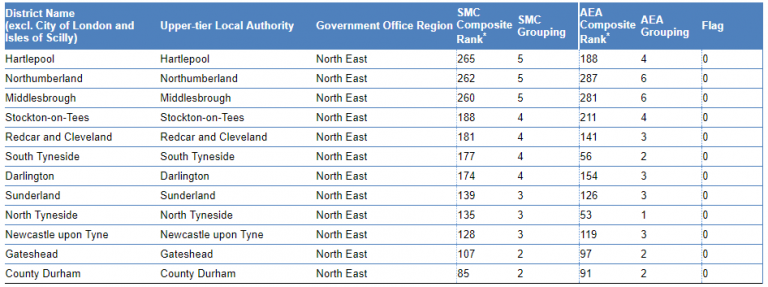Justine Greening was challenged at yesterday’s Teach First Impact Conference on why there are currently no Opportunity Areas in the North East. The Secretary of State said she hoped that areas in the North East would be included ‘over time’.
However our analysis finds that, if the DfE uses the same method for selecting Opportunity Areas as it has used so far, it might be a while before we get to the North East.
The 12 Areas that have already been selected were in group 6 (the weakest sextile) in both indexes, which is why they were chosen. There were a further 19 LA Districts which were also in group 6 across both indexes but which have not been selected (yet).
In the table below, the areas marked with a 1 under the Flag column represent those which scored 6 points on both indexes. The areas marked with a 2 represent the first wave of Opportunity Areas and those marked with a 3 represent the second wave. The 19 areas which are flagged as 1 might represent the next cohort(s) of Opportunity Areas but none of these are in the North East.

In fact, if we look only at areas in the North East (see table below), we find that no single LA District scores 6 on both, but we might expect Northumberland and Middlesbrough to be on the target list further down the line.

In conclusion, based on how the DfE has selected the Opportunity Areas so far, there could be a further 3 waves of new areas announced before we even get to the North East. Our recent report, “Closing the Gap? Trends in Educational Attainment and Disadvantage” found that there were a further 8 local authority districts (not yet identified as Opportunity Areas) that are in the bottom quarter in terms of both the size of the gap and growth of the gap since 2012 at both primary and secondary.
The Department may therefore wish to consider a wider set of measures when deciding which areas to choose for further waves of Opportunity Areas.
Natalie Perera is Executive Director and Head of Research at the Education Policy Institute
@natalieperera1

